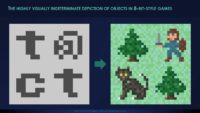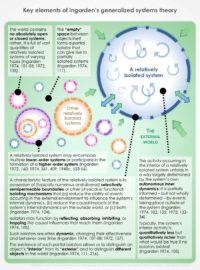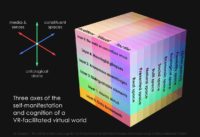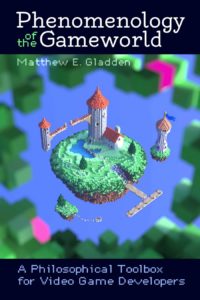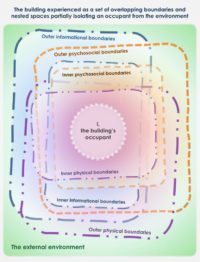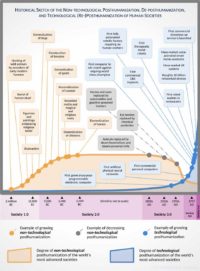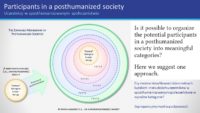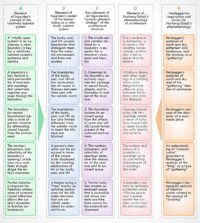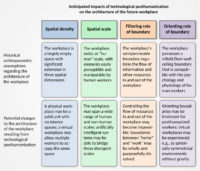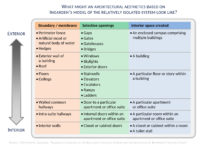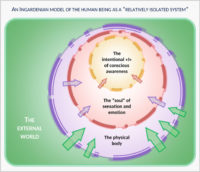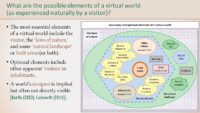
The European Society for Aesthetics Conference 2019 • University of Warsaw, Warsaw • June 13, 2019
ABSTRACT: For millennia, the buildings created by human architects largely displayed traits of solidity, immobility, passivity, limited interactivity, and reliance on fairly simple geometrical shapes to constitute their core structure. As a result, the field of architectural aesthetics could take for granted the fact that a “building” was such a motionless, non-interactive shell; the philosophical frameworks developed to analyze buildings thus had very little in common with those used to analyze, say, living organisms or moral agents.
This paper begins by showing how such historical assumptions are now being undermined through the development of technologies that enable the creation of types of buildings that would previously have been impossible. For example:
• Augmented reality technologies increasingly allow buildings to create perceived and experienced structures that differ wildly from the buildings’ actual physical components.
• Developments in ambient intelligence and social robotics allow a building to create intimately interactive spaces that interpret their occupants’ moods and unspoken thoughts and respond through physical changes, speech, and other social behaviors.
• AI-guided parametric design (championed by figures like Zaha Hadid and Patrik Schumacher) is enabling the creation of highly complex, asymmetrical, curvilinear, resilient, biomimetic architectural forms that no human mind could design.
The building of the dawning future is more than just a “building”: it is a biomimetic, interactive architectural entity that is richly “biomimetic” not simply because of its curvilinear surface but because of its dynamism, agency, and role as an intelligent, autonomous social actor. Depending on its AI, such a building may even constitute a “person” capable of meaningful social relationships. In the language of Herbrechter’s critical posthumanism, such buildings are posthuman agents that create new types of posthumanized architectural spaces.
The emergence of such architectural entities requires the development of new conceptual frameworks for investigating them from the perspective of philosophical aesthetics. One popular paradigm employed to analyze parametrically designed architecture is that of Deleuze’s fold, which Deleuze illustrated in Le Pli: Leibnitz et le Baroque (1988) through his allegory of the “Baroque house.” The Deleuzian fold is active, curvilinear, and mediating; it thus possesses some properties common to biomimetic, parametrically designed buildings. However, we argue that Deleuze’s Baroque house allegory fails to capture the agency, dynamism, mutability, and interactivity of the emerging architectural entities described here; the need thus remains for new frameworks to describe them. We propose one such approach that draws on elements of Ingarden’s later thought that have been largely overlooked within the field of aesthetics.
The Polish philosopher Roman Ingarden (1893-1970) is known in the field of architectural aesthetics primarily for the “classical” phenomenological frameworks that he developed in the 1920s and 1930s, which analyze the stratification of the architectural object (i.e., the “building”) as a work of art, the ontological status of the building as a purely intentional object, and the role of concretization in aesthetic experience. Today – after a century of developments in aesthetics – the ontological suppositions of those frameworks are seen as increasingly antiquated, and it is often presumed that Ingarden has little to offer for the analysis of posthumanized architectural entities.
In this paper, however, it is argued that the opposite is true, as the conventional view of Ingarden overlooks innovative strains of thought (a sort of “Ingarden 2.0”) that arose in his later years, as he explored ongoing scientific and technological advances. For example, we show how Ingarden foresaw future VR technologies, analyzed what today would be called “computational aesthetics,” and made one of his last (unfinished) projects the reworking of his earlier writings to account for new discoveries in neuroscience. Moreover, his work in systems theory proved so influential that he is considered a pioneering figure of Polish cybernetics.
Ingarden died before applying his mature systems theory (and especially, his model of the “relatively isolated system”) to aesthetics; as a result, it has been largely ignored by later aestheticians. However, we argue that it is not only possible to formulate a “systems-theoretical aesthetics” grounded in Ingarden’s systems theory, but that it offers a valuable tool for analyzing emerging biomimetic, interactive architectural entities.
Developing an Ingardenian systems-theoretical architectural aesthetics. As the foundation for its proposed systems-theoretical aesthetics, this paper analyzes Ingarden’s concept of the “relatively isolated system” by tracing its development over decades and providing translations of some passages previously available only in Polish. Sources analyzed include:
• Ingarden’s account of the membranes that partially isolate bodily organs from one another other, which is presented in O poznawaniu dzieła literackiego (1937).
• Ingarden’s model of a living organism as an enduring core surrounded by outer layers that arise and are destroyed throughout one’s life, as presented in Spór o istnienie świata, vol. 1 (1941).
• Ingarden’s model of the “partially isolated system” and the role played by semipermeable boundaries that regulate an object’s engagement with its environment, as described in a plan (1945-46) for Spór o istnienie świata, vol. 3. This concept was influenced by Ingarden’s reading of Bertalanffy’s Theoretische Biologie.
• Ingarden’s concept of the “relatively closed system,” found in preliminary notes (1950-54) for Spór o istnienie świata, vol. 3.
• Ingarden’s mature concept of the “relatively isolated system,” presented in Über die Verantwortung: Ihre ontischen Fundamente (1970).
Drawing on the multifaceted concept of space found in Christian Norberg-Schulz’s Heideggerian architectural phenomenology, we demonstrate how a systems-theoretical aesthetics grounded in Ingarden’s concept of the relatively isolated system identifies the emerging biomimetic, interactive architectural entity as a system that creates, encompasses, animates, and regulates a nexus of overlapping three-dimensional, experiential, informational, technological, social, and ecological spaces. Such an approach categorizes, compares, and evaluates architectural entities according to the nature of their semipermeable membranes and their openings.
In a manner consonant with contemporary environmental aesthetics, this approach locates a building’s aesthetic properties in the “porousness” of its external and internal physical, informational, and social boundaries – which include not only structures like walls, windows, and stairwells but also the topologies of Wi-Fi networks; information security mechanisms; air circulation patterns; elements that regulate colonization of the space by plant or animal species; social networks; enforced social conventions; and the relationships between a building’s human occupants and the artificial agents that enliven it. The definition and exploration of this approach represents this paper’s central achievement.
The paper concludes by discussing strengths and weaknesses of this proposed approach. It is argued that it can prove useful for analyzing the design and aesthetic experience of buildings transformed through the incorporation of artificial agency and biomimetic dynamics.
It is hoped that this paper can contribute to aesthetic discourse in several ways. First, it shows how diverse technologies are combining to create biomimetic, interactive, posthumanized architectural entities that differ qualitatively from buildings of earlier ages. Second, it formulates an Ingardenian systems-theoretical aesthetics whose foundations in emergentist theoretical biology render it at least as suitable for describing such entities as paradigms like the Deleuzian fold. Finally, the text presents a historical-textual analysis of aspects of Ingarden’s thought that are little known within philosophical aesthetics, thereby shedding new light on a leading 20th-century aesthetician.
Read more

